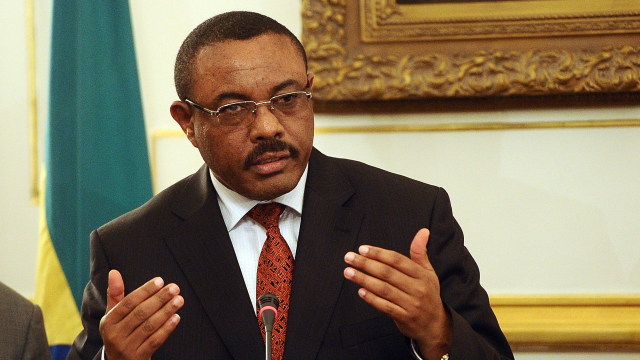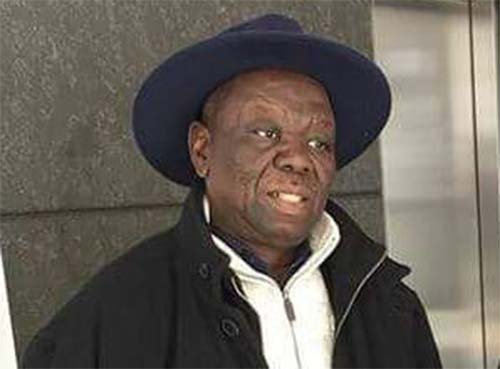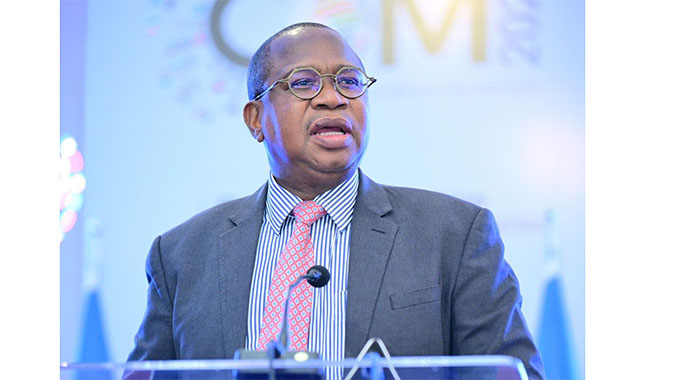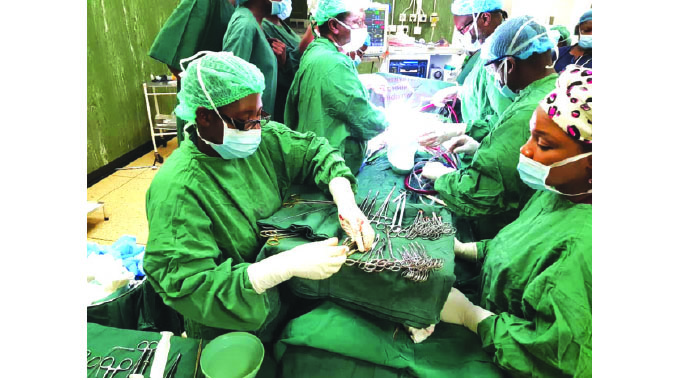Ethiopia sets sights on $30bn apparel exports

Leonie Barrie Correspondent
Ethiopia is raising the bar on its garment and textile ambitions, targeting exports worth $30 billion by 2025: a huge goal for a country whose annual shipments currently sit at just $115 million. Speaking for the first time about the plans, Dr Arkebe Oqubay, a minister and special advisor to Prime Minister Hailemariam Desalegn, shares the “bold vision” he believes will transform this East African nation into a compelling new sourcing hub for brands, retailers and their suppliers.
“By 2025 we want to make Ethiopia the leading apparel and textile manufacturing hub in Africa capable of exporting up to $30 billion. This is the single, bold vision we have,” explains Dr Arkebe.
“It is a challenge, but one we are confident we can achieve. We believe if Vietnam can do it, if Bangladesh can do it, Ethiopia can do it even better.”
It’s the first time the country’s vision has been spelled out in such detail. And with annual clothing exports of just US$73,25 million in 2015, there’s no doubt the country does indeed have a massive battle on its hands. Its goal represents a 300-fold rise in shipments in just eight years. Looked at another way, Ethiopia’s combined textile and clothing exports of $114,8 million are just a fraction of the revenues of companies like TAL Apparel ($850 million) and Arvind Limited ($770 million), who are in the process of setting up production facilities in the country.
It’s not the first time Ethiopia’s government has looked to the textile and clothing supply chain as one of the country’s key targets for growth, as just-style first reported around a decade ago.
But what seems very different now is that the government has a clear view about how it intends to achieve its goals, honed from an almost unprecedented level of collaboration with leading fashion brands and retailers, manufacturers.
Its plans extend to building a sustainable, fully vertical supply chain from the ground up and, crucially, leading players from across the industry are flocking to the country.
“The one thing that is unique in Ethiopia is that there has never been such an organised roadmap dedicated to apparel and textiles . . . not in any country in the world,” explains Ranjan Mahtani, chairman and CEO of Hong Kong-based Epic Group, one of the world’s largest producers of woven tops and bottoms, which has just shipped its first products from the country.
“Number one priority”
“Until 2010 the prime focus was on agriculture, and even in the last five years it has been in transition,” Dr Arkebe explains. “But now we are giving more attention to manufacturing. And if we look at manufacturing, then apparel and textiles is our top priority because it’s the largest employing industry, and also the international market is significant: every household requires apparel and textile products.”
He adds: “We are two years into our journey so far. We are a long way from achieving our vision, but believe we are following the right path.”
A commitment to the textile and garment sector is part of Ethiopia’s broad Industrial Development Strategic Plan (2013-2025) to propel the country to middle-income status over the next decade. It also features in the second five-year Growth and Transformation Plan (GTP-II), which targets production worth US$2,18 billion and US$779 million in export revenue by 2020.
And the hope is that industrialisation will help the country reduce its dependence on subsistence farming, generate foreign income through exports, increase employment and therefore reduce poverty.
“Ethiopia has a lot to offer to attract investors: we have good political stability, macro-economic stability, competitive labour that can help reduce production costs, competitive and efficient energy. We have invested in long-term infrastructure and in skills; we have built more than 50 universities, and more than 1 300 technical schools to train operators and technicians,” Dr Arkebe explains.
It is also the second largest electricity producer in sub-Saharan Africa, with a focus on renewable power generation from hydroelectric, wind and geothermal sources.
And it enjoys duty-free privileges to the US and EU markets through AGOA (the African Growth and Opportunity Act) and the Everything But Arms (EBA) deal, as well as preferential duty treatment to markets such as China, India, Japan, Canada and Australia.
For investors, favourable benefits to attract clothing and textile companies looking to relocate their manufacturing bases to Africa include duty-free imports of machinery, spare parts and raw materials; along with zero tax on exports and exemptions from income tax for up to ten years.
Multiple level view
Even so, Dr Arkebe agrees the export vision of $30 billion by 2025 “is a very ambitious programme. It’s going to require a huge effort, and in order to achieve this we are working on multiple levels.”
The first focus, he explains, has been on attracting high quality investment from best-in-class buyers and suppliers “who are interested to work on the long-term and also high value, rather than those only interested in cheap labour.
“As a global value chain it’s a buyer-driven industry, so we have to engage buyers on a strategic level. Secondly, we need leading manufacturers: they already know the requirements related to compliance and standards, (and have existing) supply arrangements with the buyers. We also want them to be drivers for know-how transfer in skills development and management skills to local companies.”
Among the firms currently setting up operations in the flagship Hawassa Industrial Park are PVH Corp, owner of the Calvin Klein and Tommy Hilfiger brands; Hong Kong-based dress shirt specialist TAL Apparel; Sri Lanka’s casual wear to underwear maker Hirdaramani Garment, and sock maker Isabella and Sarasavi Export; Indian denim giant Arvind Ltd, and suit specialist Raymond Group; as well as Chinese fabric mill Wuxi Jinmao.
Another key pillar is to set up specialised industrial parks “built with the highest international building, fire and electrical safety standards and also with sustainability at their core.” Dedicated not only to clothing production but attracting the tier-2 and tier-3 fabric and fibre mills too, the goal is to ensure an environment “where energy will not be a constraint, where transport and logistics will not be a constraint.”
The Hawassa Industrial Park, for example, is mostly powered by renewable electricity sources (hydro-electricity), with rainwater recycling, and solar powered LED street lights. There is also a zero-liquid discharge facility — the first in Africa — to purify and recycle virtually all of the wastewater produced, as well as recover and re-use the salt used in the textile dyeing process.
“Ultimately we want to be able to say apparel and textile products produced in Ethiopia have the lowest carbon footprint, so we can use that as a source of competitive advantage.”
Linking these specialised industrial hubs with local technical colleges and universities will help “improve the skills upgrading” and provide additional support and experience to local companies. In addition, Dr Arkebe reveals, talks are underway to try to involve fashion schools in London and New York.
Verticalisation
Creating a fully vertical supply chain from the ground up, “whereby we have the apparel sector, then fabric mills and then the spinning mills and then high quality cotton plantation,” is seen as key to the sector’s long-term prospects.
Just focusing on garment production would make it easy for companies to “park and move to the next destination. We have to build an industry that is not footloose, an industry that can sustain in the long term,”
Dr Arkebe explains, “We don’t want to repeat what is happening in some Asian countries such as Bangladesh, which exports $26 billion (in garments) but imports $22 billion (in raw materials).”
Another element is to make Ethiopia “the hub of accessory production. By doing this we will ensure that 90 percent of the materials are locally produced, we will create more jobs, more value, and ensure companies are guaranteed to improve their speed to market.”
This last point — speed to market — is the icing on the cake; the endgame so to speak. “Speed to market is a critical issue to the apparel industry; it is the final determining factor to being competitive. And you can only achieve this if it’s fully integrated with all materials supplied locally,” Dr Arkebe says.
Infrastructure and logistics
Another key component in delivering speed, of course, is logistical efficiency, and this too is being tackled. Being vertical is one way to be fast and flexible, but in the meantime the inputs for apparel made in landlocked Ethiopia — and the finished products themselves — have to be transported by truck to and from the neighbouring Red Sea port of Djibouti, a process that is both slow and expensive.
Dr Arkebe envisages a more efficient system that combines air, rail and sea transport.
A new Chinese-built electric railway network that links Addis Ababa, the dry port city of Modjo, and Djibouti, will help reduce cargo transit times from three days by road to 10-12 hours by train. And there are future plans for eight rail corridors that will make up a 6 000km network and create a series of key trade routes to neighbouring Kenya, South Sudan and Sudan.
But leveraging the capability of state-owned Ethiopian Airlines — “the largest airline in Africa and the fastest-growing airline in this region — may play a key role in the logistics process, especially if speed is important. Its new cargo terminal at Addis Ababa Bole International Airport gives it an annual cargo capacity of 600 000 tons — “which is as big as Singapore’s main air cargo terminal” — and transit times could be cut by moving cargo by air from Ethiopia to Jeddah or Dubai, to be transported onwards by sea.
Flagship industrial park
Having a vision is one thing, but it’s at the Hawassa Industrial Park, a US$250 million facility some 275km south of the capital, where it’s starting to take shape. Built in the space of just nine months, with “100 percent occupancy secured from the very beginning,” the 1,4 million square metre facility provides 410 000 square metres of factory space across 37 sheds.
As well as its eco-friendly features, by the end of next month the park will also boast a whole range of government facilities on-site under the Ethiopian Investment Commission’s (EIC) one-stop service, from banking to visa and immigration facilities, import and export licenses, work permits, and customs clearance.
“Red tape is a major problem for many companies, so this new system creates the right environment.”
A reorganisation has also positioned the EIC as “a single window” for businesses coming into the country. The body is now under the direct responsibility of the Prime Minister’s office, and is led by the Ethiopian Investment Board, chaired by the Prime Minister himself, which “makes it easier for us to make quick decisions, but also do it in a very transparent way.”
It also provides investors with a means to positively influence policy — including a new draft labour law that brings overtime in line with international standards and with manufacturers’ operations overseas; as well as introducing longer probation periods for workers.
By June, all companies in Phase I of the Hawassa Industrial Park will have gone into operation, Dr Arkebe says, with the aim of creating 60 000 direct jobs and generating $1 billion in exports when fully up-and-running. “We expect by end of 2018 we’ll be able to achieve this target.”
Phase II gets underway in July, and will be ready for the next tranche of investors by the middle of next year, with the main focus on bringing more fabric mills to the park. “The top ten largest mills in China are considering investing in Ethiopia,” Dr Arkebe says.
Stability and security
For all the progress on economic growth and policy, one key issue currently overshadowing Ethiopia is political.
The country has been under a national state of emergency since last October following widespread anti-government demonstrations by members of the Oromo and Amhara ethnic groups, who accuse the Ethiopian People’s Revolutionary Democratic Front government of suppressing their political and economic rights. Protestors have targeted and torched foreign farming and manufacturing projects accusing them of land encroachment.
Despite an outward air of calm in the country, the fact the state of emergency has been extended for another four months to August, and the potential damage to Ethiopia’s human rights reputation, is obviously a cause for concern. There are also fears that unrest will erupt again unless the underlying drivers are resolved.
Dr Arkebe is reluctant to be drawn on the subject, but says the civil discontent “is linked with the challenges we have in fulfilling the aspiration of the youth: they want economic empowerment, they want decent jobs. Every year we have 100 000 university graduates; we have close to one million graduates from technical schools and high schools every year . . .we need to create jobs.”
He also suggests the country’s multinational federal system, under which 80 ethic groups with 80 different languages (35 of which are used for primary school education) are decentralised into nine states, each with its own constitution, executive government, and legislature, “is a big challenge.”
“The reason the government put in place the state of emergency is not because the situation was out of control, but with the constitution we have the government cannot arrest people without an order from the court.” The state of emergency gave security forces the power to arrest people.
“I don’t believe we will need to renew it for an additional period after these four months,” he says.
Dr Arkebe also makes that point that a state of emergency was also introduced in France following a series of recent terrorist attacks. “So you have to see it in context. Every country has its own challenges.”
Partnership approach
The level of trust that has developed between the government — especially Dr Arkebe — and the industry has certainly had a key role to play in helping reassure investors.
He insists they supported the government’s swift action on the state of emergency “because immediately within 24 hours everything was calm, and investors like stability and security. The response was positive that the situation was contained.”
Indeed, according to the Ethiopian Investment Commission there has been no change to the inflow of investment since the state of emergency was announced, and no foreign investor has stopped operations.
It’s part of a wider and ongoing dialogue between the two sides. “A common vision and approach doesn’t evolve by itself, so we argue, discuss, exchange ideas, and ultimately reach a good conclusion,” Dr Arkebe explains.
“The government has been a very good listener. We have significantly benefited from the assistance of companies like PVH in terms of attracting investment, but also in terms of how to develop the industry, on how to avoid the mistakes made in Asia. PVH has been playing an exemplary role, and it’s a real sense of partnership.”
It’s a view echoed by Mark Green, executive vice president of global supply chain at PVH. “The difference between a conversation with Vietnam or Bangladesh or India is the vision and the partnership with the government,” he told delegates at the Prime Source Forum event in Hong Kong earlier this year.
“I don’t know of any other sourcing country where there’s been such an alignment between the government’s vision and the industry’s vision of what a perfect supply chain would look like. It’s not always easy to get that.
“As you go into a new country there isn’t anything more important. You’re investing millions and millions of dollars, so having the comfort of a government that is on your side, that is solutions based as opposed to a government that puts up obstacles or blocks, is an extraordinarily helpful advantage for any investor.” — Just Style.







Comments